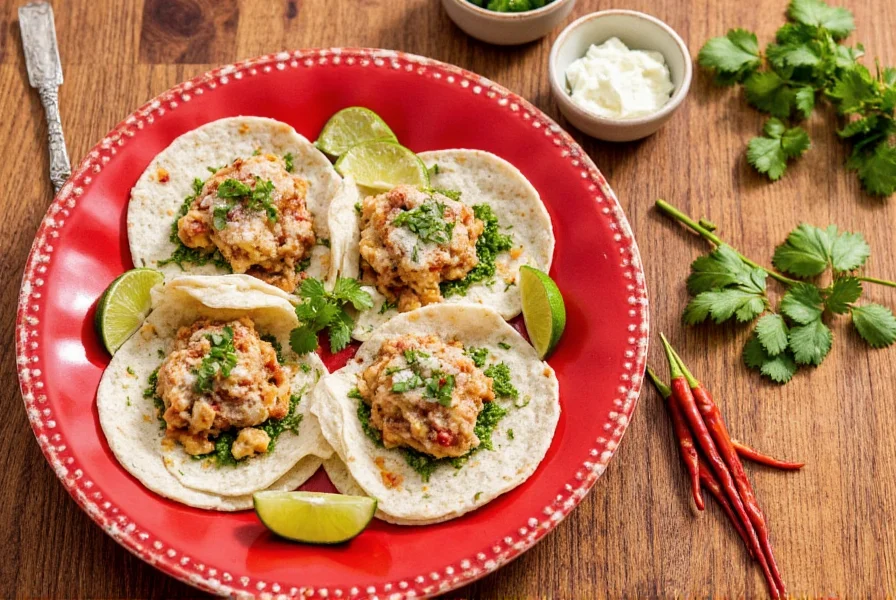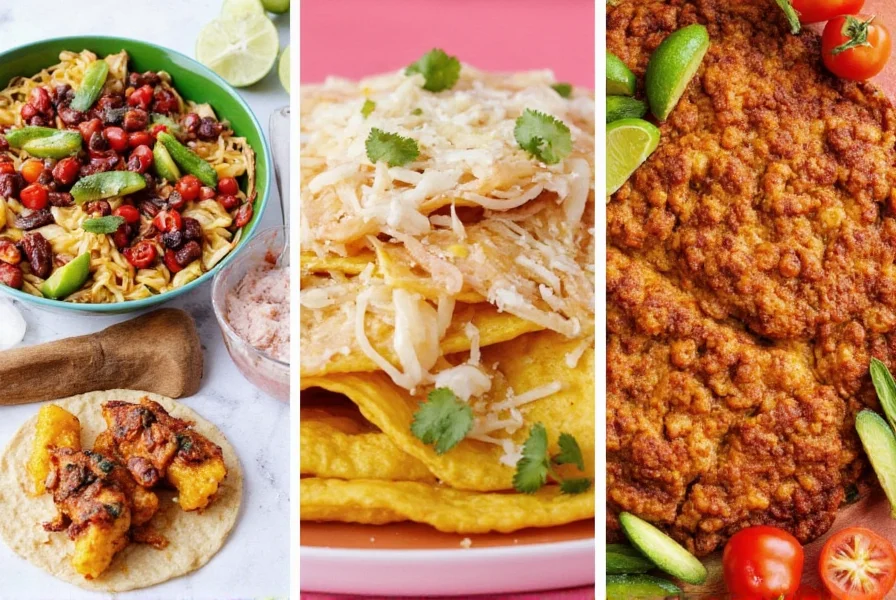10 Spicy Secrets Behind the Flavorful Evolution of Mexican Cuisine History

Table of Contents
- Introduction: A Journey Through Heat and Heritage
- Ancient Roots: How the Aztecs and Mayans Built the Foundation
- The Spanish Fusion: When Old World Met New Flavors
- Regional Variations: Spice Profiles Across Mexico
- Chiles: The Heartbeat of Mexican Spice Culture
- Buying Guide: Choosing Authentic Mexican Spices
- Spice Up Your Kitchen: Practical Tips from Pros
- The Future of Mexican Cuisine: Trends and Innovations
- Conclusion: Embracing the Legacy of Mexican Spice
Introduction: A Journey Through Heat and Heritage
Mexican cuisine isn’t just about tacos and burritos—it’s a deep, flavorful journey through centuries of culture, conquest, and creativity. From the pre-Hispanic civilizations to the modern taco trucks of Los Angeles, one constant remains: the use of bold spices that ignite the senses.
So what makes Mexican food so uniquely spicy? Why do certain regions use more chili while others lean into herbs or citrus? Let's dive into the fascinating history behind Mexican cuisine and explore how its signature spices evolved over time.
Ancient Roots: How the Aztecs and Mayans Built the Foundation
Long before Europeans set foot in the Americas, indigenous civilizations like the Aztecs and Mayans were already experimenting with spice. Their culinary arsenal included:
- Chiles – The most iconic ingredient in Mexican cooking.
- Cacao – Used not just for sweet treats but also in spicy sauces like mole.
- Tomatillo – For tangy green salsas.
- Epazote – An aromatic herb often used with beans.
Their techniques involved roasting, grinding, and fermenting—methods still respected by traditional cooks today.
The Spanish Fusion: When Old World Met New Flavors
In 1519, Hernán Cortés arrived in Tenochtitlán (modern-day Mexico City). What followed wasn’t just political domination—it was a complete transformation of the region’s flavor palette.
| Old World Ingredients | New World Counterparts | Resulting Dishes |
|---|---|---|
| Pork, beef, dairy | Maize, cacao, chiles | Carnitas, quesadillas, mole con carne |
| Olive oil, garlic, cinnamon | Tomatillos, epazote, oregano | Salsa verde, adobo marinades, tamales |
This fusion gave birth to some of the most beloved dishes we now associate with Mexican cuisine.
Regional Variations: Spice Profiles Across Mexico
Mexico is a huge country, and each region brings its own personality to the table. Here's a breakdown of key regional spice profiles:
| Region | Signature Spices | Popular Dishes |
|---|---|---|
| Oaxaca | Smoked chiles, cacao, cinnamon | Mole negro, tlayudas |
| Yucatán | Achiote, sour orange, habanero | Cochinita pibil, panuchos |
| Northern Mexico | Garlic, cumin, dried chiles | Arrachera steak, machaca |
| Central Mexico | Tomatillo, serrano chile, coriander | Tacos al pastor, pozole |
Chiles: The Heartbeat of Mexican Spice Culture
If you take away anything from this article, let it be this: chiles are the soul of Mexican cuisine. There are over 60 varieties grown in Mexico alone! Here’s a quick overview:
| Chile | Heat Level (Scoville) | Best Use |
|---|---|---|
| Ancho | 1,000–2,000 | Mole, stews |
| Guajillo | 2,500–5,000 | Red salsas, adobo |
| Jalapeño | 2,500–8,000 | Fresh salsa, pickling |
| Habanero | 100,000–350,000 | Yucatecan dishes, hot sauces |
Buying Guide: Choosing Authentic Mexican Spices
Whether you're stocking your pantry or preparing a weekend feast, choosing quality spices is crucial. Here's a guide to the top products and their benefits:
1. La Costeña Guajillo Chiles
- Features: Rich earthy flavor, slightly fruity.
- Advantages: Versatile for salsas, moles, and marinades.
- Use Cases: Making homemade red sauce or adobo paste.
- Target Audience: Home cooks and Latin food enthusiasts.
- Suitable Occasions: Weeknight dinners, themed gatherings.
2. McCormick Ground Cumin
- Features: Consistent grind, strong aroma.
- Advantages: Enhances meat rubs and bean dishes.
- Use Cases: Tacos, chili con carne, soups.
- Target Audience: Casual cooks and beginners.
- Suitable Occasions: Everyday meals and slow cooker recipes.
3. Badia Oregano
- Features: Mexican-style oregano, stronger than Mediterranean version.
- Advantages: Essential for authentic red sauces and grilled meats.
- Use Cases: Carne asada marinades, pozole broth.
- Target Audience: Culinary hobbyists and spice collectors.
- Suitable Occasions: Outdoor barbecues, family dinners.
4. Diana Black Label Epazote
- Features: Dried leaves with intense aroma.
- Advantages: Reduces gas from beans, adds depth to stews.
- Use Cases: Frijoles de la olla, menudo, posole.
- Target Audience: Traditionalists and home chefs.
- Suitable Occasions: Hearty winter meals, cultural celebrations.
5. El Yucateco Habanero Sauce
- Features: Smoky, fruity heat with vinegar kick.
- Advantages: Adds complexity to marinades and dips.
- Use Cases: Seafood tacos, grilled vegetables, cocktails.
- Target Audience: Spice lovers and adventurous eaters.
- Suitable Occasions: Game day snacks, fiesta nights.
Spice Up Your Kitchen: Practical Tips from Pros
Ready to level up your Mexican game? Try these pro tips:
- Toast your spices first: Lightly toast whole chiles, seeds, and cumin in a dry pan to release oils and intensify flavor.
- Balance heat with acid: A splash of lime juice or vinegar can tame overly spicy dishes without losing flavor.
- Don’t forget the salt: Salt enhances the natural flavors of spices—don’t skip it!
- Blend before using: Create your own spice mixes like adobo or recado for deeper taste.
- Experiment boldly: Mix different chiles and seasonings to find your personal flavor signature.
The Future of Mexican Cuisine: Trends and Innovations
Mexican cuisine continues to evolve globally. Some current trends include:
- Plant-based twists: Vegan chorizo made from mushrooms or jackfruit seasoned with ancho and chipotle.
- Global fusion: Korean-Mexican tacos, Thai-inspired moles, and Japanese-style tamale buns.
- Artisanal spice brands: Small-batch spice makers focusing on heirloom chiles and organic blends.
- Sustainable sourcing: More restaurants and chefs supporting local farmers and heritage grains.
Conclusion: Embracing the Legacy of Mexican Spice
Mexican cuisine history is a rich tapestry woven with fire, tradition, and innovation. From the sacred rituals of the Aztecs to the bustling street carts of modern Mexico City, every bite tells a story of resilience and creativity.
By understanding the role of spices throughout history, you not only enhance your cooking—you connect with a vibrant cultural legacy. So next time you reach for that bottle of hot sauce or stir a pot of mole, remember—you’re part of a culinary revolution that started thousands of years ago.

Now go forth and cook with confidence—and don’t forget to turn up the heat!











 浙公网安备
33010002000092号
浙公网安备
33010002000092号 浙B2-20120091-4
浙B2-20120091-4